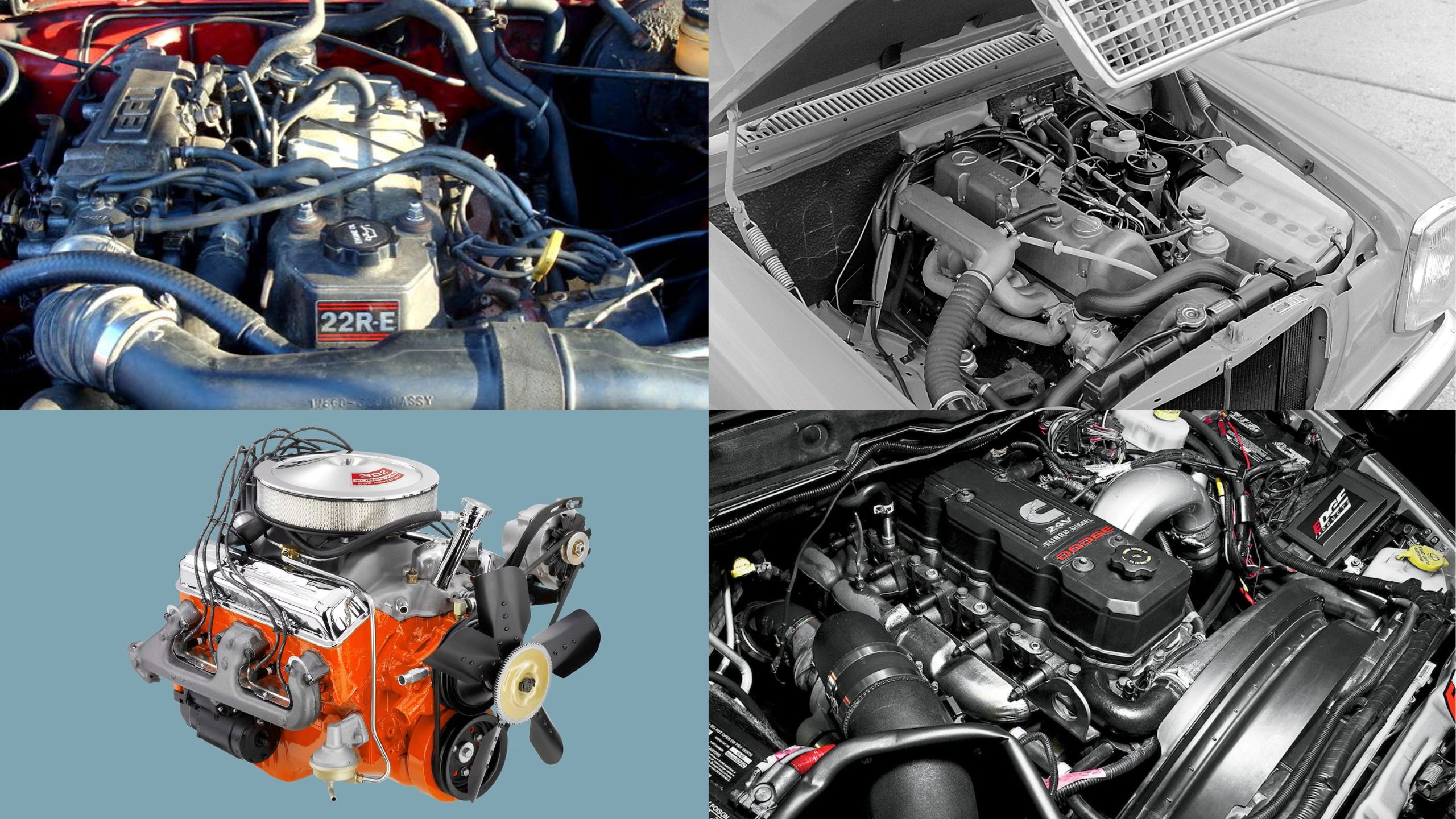In the automotive world, some engines achieve legendary status for their exceptional durability, continuing to run strong long after their vehicle bodies have succumbed to rust, wear, or obsolescence.
These mechanical marvels represent the pinnacle of engineering reliability – powerplants so robust that they often find second lives powering everything from boats to industrial equipment when their original chassis can no longer be salvaged.
What makes an engine truly exceptional isn’t just about reaching high mileage milestones, but about doing so with minimal maintenance while maintaining performance and efficiency.
The most durable engines combine thoughtful design, quality materials, conservative tuning, and accessibility for repairs.
These powerplants become so trusted that entire communities form around them, with enthusiasts going to extraordinary lengths to preserve them even as they transplant them into new hosts.
From American V8s that powered the muscle car era to Japanese inline-fours known for bulletproof reliability, and European diesels that seem to run forever, this list celebrates ten remarkable engines that consistently outlast the vehicles they were designed to power.
Each represents a high-water mark of durability engineering that continues to influence automotive design philosophy today.
1. Toyota 22R/22RE 4-Cylinder Engine
The Toyota 22R and its fuel-injected evolution, the 22RE, stand as monuments to mechanical simplicity and durability in the automotive world. First introduced in 1981, this 2.4-liter inline-four became the heart of Toyota’s trucks and SUVs for nearly two decades, powering everything from the humble Pickup (later Tacoma) to the rugged 4Runner and Hilux models across global markets.
What makes the 22R/22RE truly exceptional is its no-nonsense design philosophy. With a cast iron block, sturdy timing chain (replacing the more problematic timing belt of its predecessor), and conservative power output ranging from 97-112 horsepower depending on the year and application, Toyota prioritized longevity over impressive specification sheets.
The engine’s understressed nature meant that internal components experienced less strain during operation, contributing significantly to its legendary reliability.
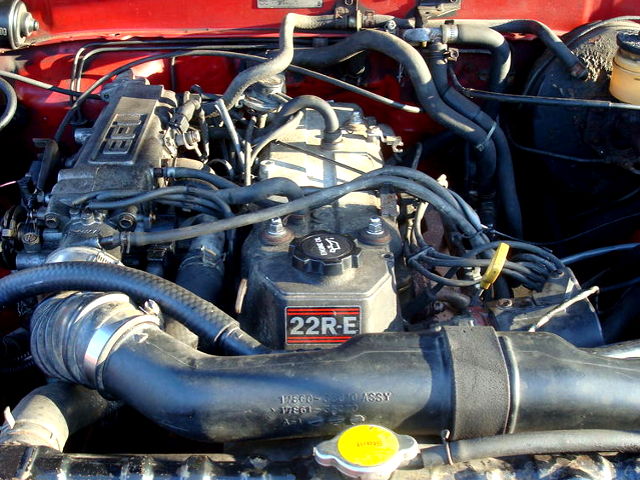
The 22R’s hemispherical combustion chamber design promoted efficient combustion while its simple, accessible layout made maintenance straightforward even for novice mechanics.
With proper oil changes, these engines routinely exceeded 300,000 miles without requiring major internal repairs. Particularly impressive was the engine’s ability to maintain compression and oil pressure at high mileage, often continuing to run acceptably even when other maintenance was neglected.
These engines became especially renowned in developing countries where vehicle maintenance resources might be limited, with countless examples exceeding 500,000 miles in harsh conditions from the Australian Outback to African deserts.
Even after decades of service, when the frames of their host vehicles finally surrendered to rust or collision damage, these engines would frequently be salvaged and repurposed for everything from generator sets to boat motors.
The 22R’s reputation became so formidable that it significantly contributed to Toyota’s global image for reliability, with many owners reporting their trucks still running strong with original engines even as multiple transmissions, suspension components, and body panels were replaced around them.
Today, these engines command premium prices in the used market, with enthusiasts seeking them out for engine swaps into project vehicles when they want absolute peace of mind regarding reliability.
2. Mercedes-Benz OM617 Diesel Engine
The Mercedes-Benz OM617 diesel engine represents German engineering at its most uncompromising. Produced from 1974 to 1991, this 3.0-liter inline-five cylinder turbodiesel powered the marque’s W123, W126, and G-Class models during what many consider Mercedes’ peak quality era.
With a foundation of exceptional metallurgy and precision manufacturing, these powerplants were designed with such substantial safety margins that they’ve become legendary among diesel enthusiasts worldwide.
The OM617’s cast iron block and aluminum head house components are built to withstand extreme pressure and heat. Its indirect injection system, while less efficient than modern direct injection designs, created less stress on internal components and contributed to the engine’s remarkable longevity.
The five-cylinder configuration struck an ideal balance between the inherent smoothness of an inline-six and the compactness of a four-cylinder, while providing excellent torque characteristics that made these vehicles excellent long-distance cruisers.
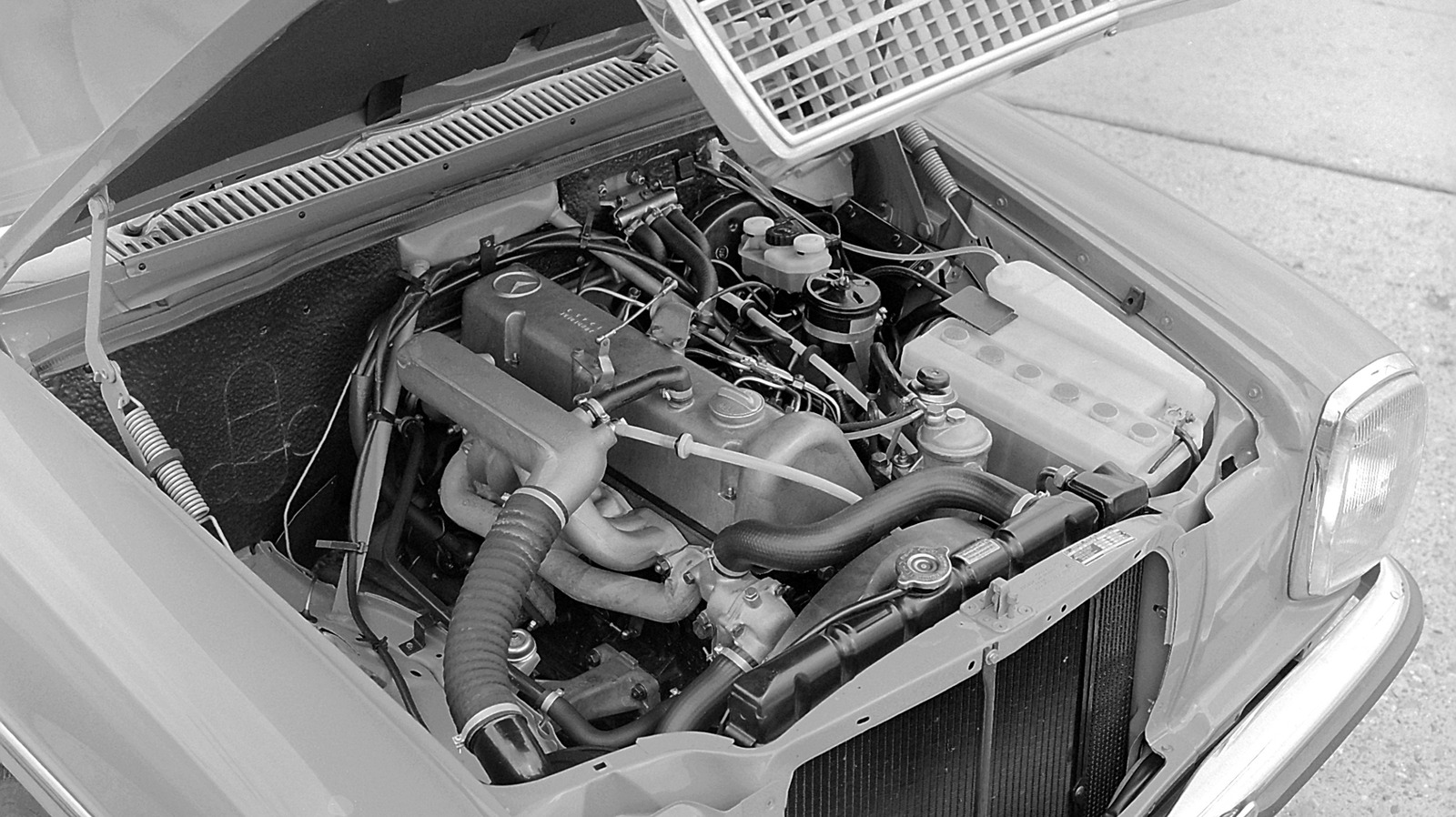
What truly distinguishes the OM617 is its ability to routinely surpass 500,000 miles without major mechanical intervention. With proper maintenance intervals primarily regular oil changes with quality diesel-specific lubricants these engines commonly reach 750,000 miles while maintaining compression and performance.
The record-holding examples have documented mileages exceeding 1.2 million miles on their original internal components, figures that seem almost implausible for modern production engines.
These powerplants became particularly famous in North America during the 1980s, where their exceptional reliability compensated for their modest power output (approximately 120-125 horsepower in turbocharged form).
When compared to the problematic American diesels of the era, the OM617’s bulletproof nature created lifelong Mercedes loyalists. The engine’s robustness became so renowned that when their original W123 bodies finally succumbed to rust or collision damage, the engines were frequently transplanted into everything from off-road vehicles to marine applications.
Today, these engines maintain cult status among diesel enthusiasts, with many considering them the most durable production diesel engines ever made.
Their ability to run on alternative fuels, including properly filtered waste vegetable oil, has only enhanced their reputation in sustainability-minded communities. Even as their original vehicles become prized classics, it’s often the presence of a healthy OM617 under the hood that commands the highest premium among knowledgeable buyers.
3. Chevrolet Small-Block V8 (350 cubic inch/5.7L)
The Chevrolet Small-Block V8, particularly in its ubiquitous 350 cubic inch (5.7-liter) configuration, stands as perhaps America’s most influential engine design.
First introduced in 1955 and produced in various forms for over six decades, the 350 V8 achieved a perfect balance of power, simplicity, and durability that made it the backbone of General Motors’ vehicle lineup and a favorite among hot-rodders and engine swappers worldwide.
What made the 350 exceptional wasn’t cutting-edge technology or impressive specific output (though performance variants certainly existed), but rather its fundamental architectural soundness. The engine’s deep-skirt block design provided excellent cylinder support, while its oversquare bore/stroke ratio reduced piston speeds and minimized wear.
With a sturdy forged steel crankshaft in earlier versions and robust connecting rods, the bottom end could withstand significant abuse, while the simple overhead valve design with hydraulic lifters required minimal maintenance.
These engines proved especially durable in truck applications, where conservative tuning (around 160-185 horsepower in stock form) meant they were significantly understressed.
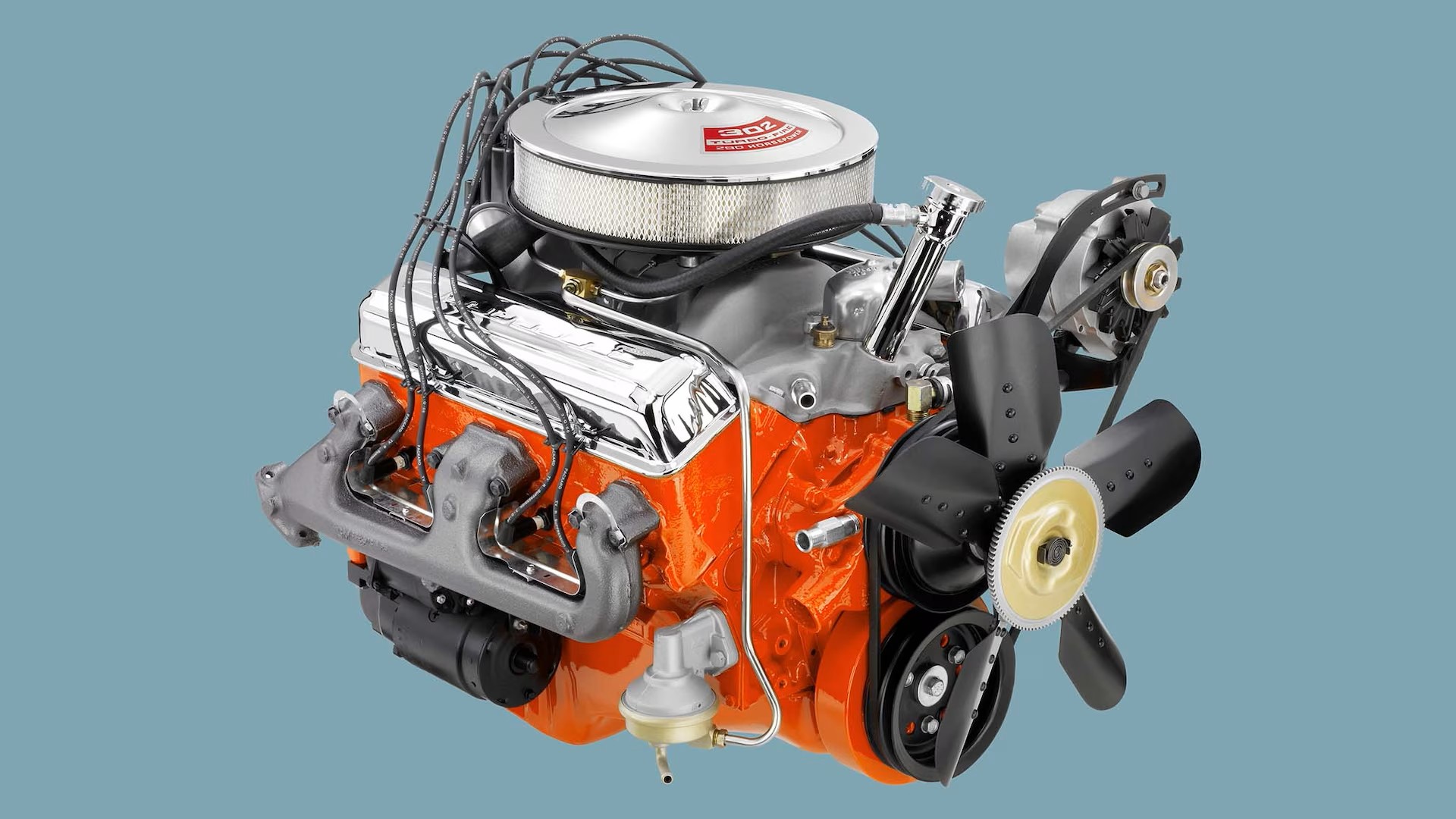
In these work vehicles, reaching 300,000 miles without internal repairs became commonplace with basic maintenance. The engine’s durability was matched by its remarkable accessibility nearly any component could be serviced with basic tools, and parts availability remains unmatched even decades after production.
Perhaps the 350’s greatest testament to longevity is how frequently these engines outlasted multiple vehicle bodies. When the 1970s and 1980s GM trucks finally succumbed to rust or accidents, their still-healthy 350 engines would be salvaged and transplanted into replacement vehicles or repurposed for everything from boats to irrigation pumps.
The aftermarket supported these practices with an ecosystem of adaptation components that made the 350 a universal power solution. Even today, with some examples approaching 70 years old, rebuilt 350s continue to power countless vehicles across America.
Their simple design makes rebuilding straightforward, and with modern machining techniques, these engines can be restored to better-than-new condition. This ecosystem of rebuilding and transplanting has given the 350 small blocks a unique form of mechanical immortality, with its architecture living on long after individual components have been replaced.
For many American gearheads, the unmistakable rumble of a Chevy 350 represents not just nostalgia, but a practical recognition of one of internal combustion’s most enduring designs.
4. Volvo Redblock Inline-Four (B230)
The Volvo Redblock family of engines, particularly the 2.3-liter B230 variant produced from 1985 to 1998, exemplifies the Swedish automaker’s philosophy of overengineered simplicity.
Named for its distinctive red-painted cylinder head, this inline-four became the powerplant of choice for Volvo’s 240, 740, 940, and early 850 models during an era when the brand was synonymous with practical durability rather than luxury.
What made the B230 remarkable was Volvo’s conservative approach to engineering. The engine block featured incredibly thick cylinder walls and main bearing caps that provided exceptional rigidity, minimizing wear even under sustained high loads.
The oversquare design (larger bore than stroke) reduced piston speeds and connecting rod angles, decreasing mechanical stress on critical components. While standard versions produced a modest 114-165 horsepower depending on the application, this understressed nature contributed significantly to the engine’s longevity.
The B230’s durability became legendary in professional applications. Volvo 240 and 740 taxis frequently exceeded 500,000 miles on their original engines, with some well-documented examples surpassing one million miles with only routine maintenance.
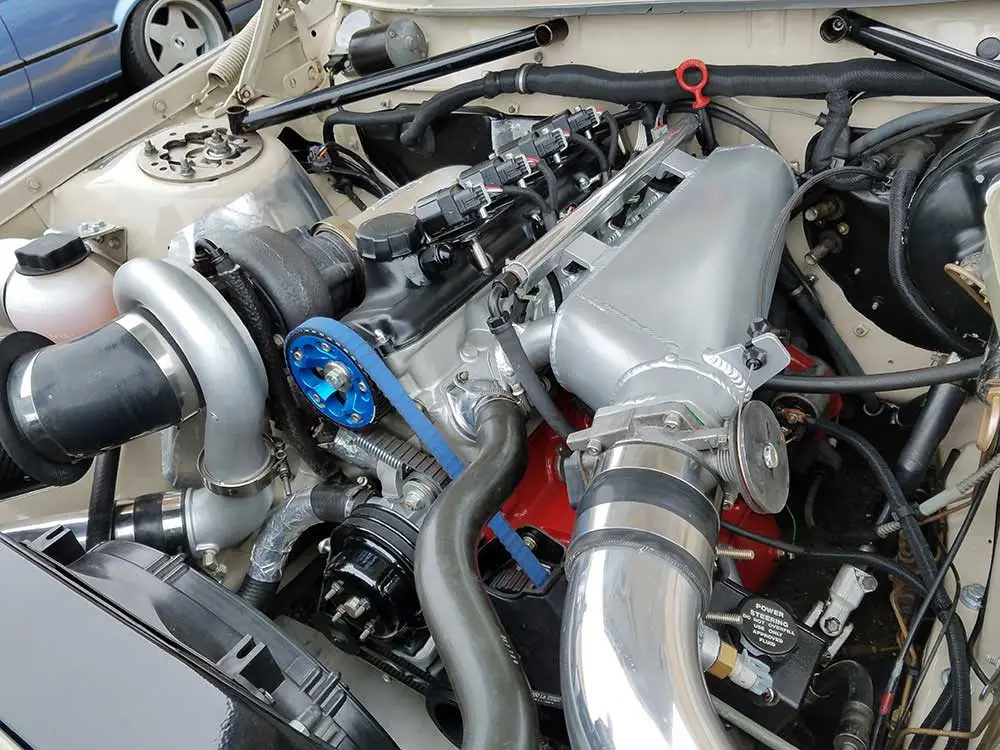
In its turbocharged variants, despite the additional thermal and mechanical stress, the robust bottom end and efficient oil cooling system still enabled exceptional service life when properly maintained.
Particularly notable was the B230’s tolerance for maintenance neglect, a characteristic rarely found in European designs. While not recommended, these engines could survive extended oil change intervals and minor cooling system issues that would destroy less forgiving powerplants.
This forgiveness made them popular in markets where sophisticated maintenance might be less accessible, contributing to Volvo’s global reputation for reliability. When their original bodies finally succumbed to rust or collision damage, these engines frequently found second lives in everything from custom hot rods to boat applications.
The Redblock’s simple, analog nature made it easy to adapt to alternative uses, while its bulletproof bottom end could handle significant power increases with minimal modification. Even today, as their original vehicles approach classic status, B230 engines remain sought after for swaps into project cars where owners prioritize reliability above all else.
This engine’s enduring legacy isn’t just about longevity statistics but how it shaped Volvo’s brand identity during a pivotal period.
The B230’s reputation for outlasting its host vehicle established an expectation of quality that continues to influence how consumers perceive Volvo decades after production ended, making it one of the most successful engines ever from a brand-building perspective.
Also Read: 10 Family Vans That Keep Running After 15 Years
5. Cummins 5.9L Inline-Six Diesel (12-Valve)
The Cummins 5.9L 12-valve inline-six diesel engine (officially designated 6BT) represents one of the most successful marriages between heavy-duty industrial design and consumer applications.
First introduced in Dodge Ram pickup trucks in 1989, this powerplant brought commercial truck durability to the passenger vehicle market, creating a legacy of reliability that transformed both Dodge’s reputation and the American diesel pickup segment.
What made the 12-valve Cummins exceptional was its uncompromising industrial heritage.
Developed primarily for agricultural equipment, construction machinery, and commercial applications, the engine featured a cast iron block with cylinder walls thick enough to be repeatedly rebored, forged steel connecting rods, an inline design that eliminated the need for a complex timing chain, and a simple mechanical direct injection system that operated without electronic controls.
These attributes created a nearly indestructible foundation that could withstand extreme pressure and heat cycles. In stock form, the early 12-valve Cummins produced a modest 160 horsepower but an impressive 400 lb-ft of torque.
This conservative tuning meant the engine was significantly understressed, operating well within its mechanical limits even under heavy loads.
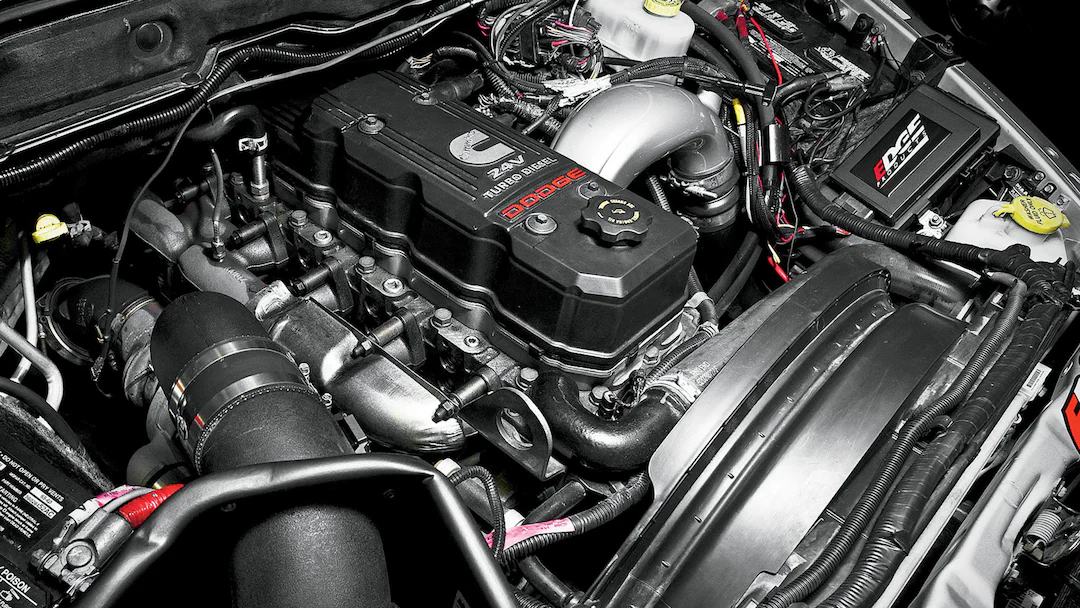
With basic maintenance primarily clean oil and fuel filter changes these engines routinely exceeded 500,000 miles without internal repairs, with many documented examples surpassing 1,000,000 miles while maintaining compression and oil pressure.
Perhaps most remarkable was the 12-valve Cummins’ simplicity. Without complex electronics or emissions equipment of later diesels, virtually everything could be diagnosed and repaired with basic tools.
Its mechanical fuel injection pump could be adjusted to increase power output substantially, sometimes doubling the factory horsepower figures with relatively minor modifications.
This tunability made the engine popular among enthusiasts and commercial users alike, who appreciated both its reliability and adaptability. The engine’s durability often far exceeded the chassis it was installed in.
In the salt-belt states, it became common to see Ram trucks with severely corroded bodies and frames still powered by perfectly functional Cummins engines.
This led to the practice of “Cummins swaps,” where the engines would be transplanted into newer donor vehicles or repurposed for generators, irrigation pumps, or marine applications. Even decades after production, these engines command premium prices in the used market specifically because of their legendary toughness.
The 12-valve Cummins created such a strong reputation that it fundamentally altered the competitive world of the American pickup truck market, forcing Ford and General Motors to develop more robust diesel offerings. For many diesel enthusiasts, the pre-1998 12-valve represents the gold standard of reliability an engine so overbuilt that its host vehicle almost always fails first.
6. Honda B-Series VTEC Engines
The Honda B-series engines, particularly the B16 and B18 VTEC variants produced from 1989 to 2001, defied conventional wisdom by proving that high-revving, performance-oriented engines could also deliver exceptional longevity.
Found in models like the Civic Si, Integra, and CR-X, these compact inline-four engines combined cutting-edge variable valve timing technology with Honda’s legendary manufacturing precision to create powerplants that could sustain 8,000+ RPM operation throughout hundreds of thousands of miles.
What distinguished the B-series was Honda’s maniacal attention to metallurgical quality and mechanical balance. The aluminum block featured iron cylinder sleeves for durability, while the VTEC (Variable Valve Timing and Lift Electronic Control) system used robust hydraulic actuators to transition between cam profiles.
Unlike many performance engines that sacrifice longevity for power, Honda engineered these engines with tight tolerances and premium materials throughout, creating a foundation that could withstand sustained high-RPM operation without accelerated wear.
The B-series became legendary for its ability to accumulate astronomical mileages while maintaining compression, oil pressure, and performance characteristics. With regular maintenance primarily quality synthetic oil changes and periodic valve adjustments—these engines routinely surpassed 300,000 miles without internal repairs.
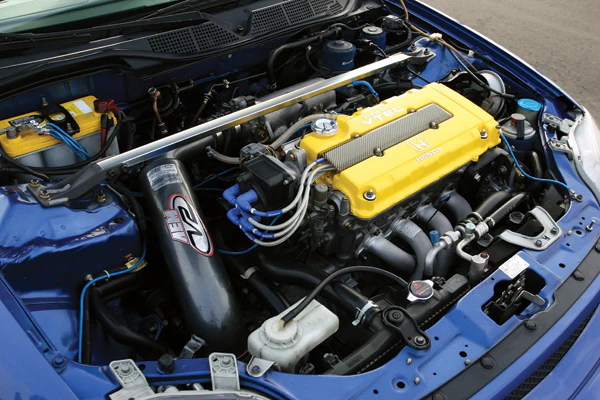
What made this particularly impressive was that unlike diesel or truck engines designed for longevity through understressing, the B-series achieved this reliability while operating near its design limits.
These engines developed cult followings in motorsport communities, where racers discovered they could endure season after season of track abuse with minimal rebuilding.
The B-series’ robust bottom end could handle significant power increases through forced induction, with properly built examples doubling the factory output while maintaining reliability. This combination of performance potential and durability made them popular choices for engine swaps into everything from earlier Hondas to custom applications.
Perhaps most telling about the B-series’ legendary status is how often they outlasted their host vehicles. In regions where road salt accelerated body corrosion, it became common for these engines to be salvaged from accident-damaged or rusted vehicles and transplanted into replacement chassis.
Even decades after production ceased, clean, low-mileage B-series engines command premium prices from enthusiasts who recognize their unique combination of performance and longevity.
The B-series VTEC engines helped establish Honda’s reputation for engineering excellence in ways that transcended mere reliability statistics.
By demonstrating that precision manufacturing and thoughtful design could create high-performance engines that matched or exceeded the longevity of more conservative powerplants, Honda challenged the industry’s traditional performance-versus-durability tradeoff paradigm and influenced a generation of engine designers across the automotive world.
7. BMW M20 Inline-Six
The BMW M20 inline-six engine, produced from 1977 to 1993, has earned a reputation as one of the most robust powerplants ever to emerge from Bavaria.
Found in the E30 3-Series, E28 5-Series, and E34 5-Series, this silky-smooth six-cylinder became the backbone of BMW’s lineup during a period many enthusiasts consider the brand’s golden era, combining mechanical sophistication with remarkable durability in a package that epitomized the “Ultimate Driving Machine” ethos.
What made the M20 exceptional was BMW’s engineering philosophy that prioritized balance and refinement alongside longevity. The engine’s inherently smooth inline-six configuration reduced vibration and mechanical stress, while its seven main bearing crankshaft provided exceptional support for rotational forces.
The single overhead camshaft design struck an ideal balance between performance and simplicity, while the timing belt (though requiring periodic replacement) reduced noise and parasitic power losses compared to chain-driven competitors.
Available in displacements ranging from 2.0 to 2.7 liters, the M20 produced between 122 and 170 horsepower in stock form figures that seem modest by modern standards but delivered engaging performance in the relatively lightweight vehicles of the era.
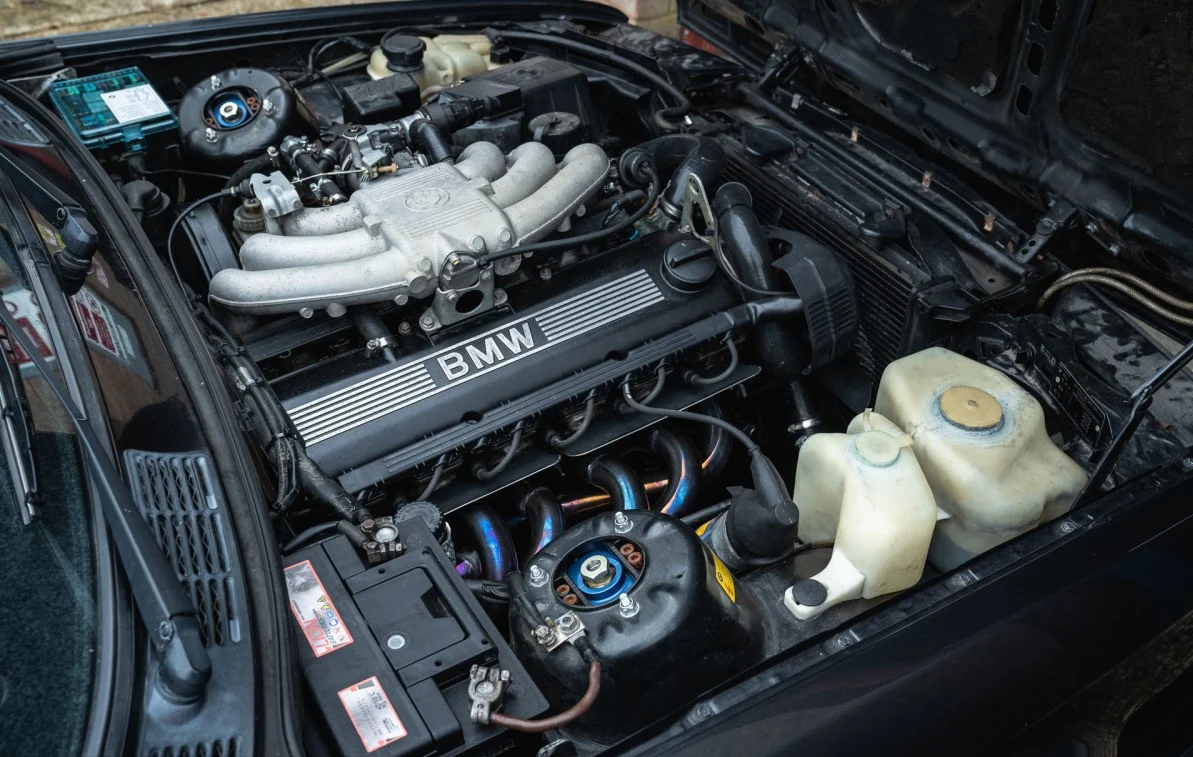
This conservative tuning meant the engine rarely operated under extreme stress in daily driving, contributing significantly to its long-term reliability. With proper maintenance, these engines routinely exceeded 300,000 miles without requiring internal repairs, with many documented examples surpassing 400,000 miles while maintaining compression and oil pressure.
The M20’s durability became particularly evident as its host vehicles aged. In European taxi fleets, BMW 520i models powered by the 2.0-liter M20 variant frequently accumulated over half a million kilometers while requiring only routine maintenance.
Among enthusiasts, the 2.5-liter (M20B25) and 2.7-liter (M20B27) variants became especially prized for their combination of performance potential and bulletproof reliability, often continuing to run smoothly even as other vehicle systems began to fail around them.
What truly distinguished the M20 was how it delivered this longevity without sacrificing the driving experience that defined BMW’s brand. Unlike some durable engines that achieved reliability through uninspiring performance characteristics, the M20’s smooth power delivery, willingness to rev, and distinctive inline-six sound made it an enthusiast favorite even as it racked up impressive mileage figures.
This combination helped establish BMW’s reputation for creating driver’s cars that could also serve as practical daily transportation for hundreds of thousands of miles.
Today, as E30-generation BMWs become increasingly collectible, the presence of a healthy original M20 engine significantly enhances a vehicle’s value and desirability. For many BMW purists, the M20 represents the perfect expression of the brand’s engineering philosophy sophisticated yet accessible, powerful yet durable, and capable of providing driving pleasure throughout decades of service.
8. Ford 300 Inline-Six
The Ford 300 cubic inch (4.9-liter) inline-six engine stands as perhaps the most understated workhorse in American automotive history. Produced from 1965 to 1996 with remarkably few fundamental changes, this straightforward six-cylinder powered everything from F-Series pickup trucks to commercial vehicles and industrial applications during its impressive 31-year production run.
While it never received the glamorous attention of V8 engines, the 300’s reputation for indestructibility made it the quiet legend of Ford’s lineup. What made the 300 exceptional was its uncompromising focus on durability through simplicity.
The engine featured a cast iron block with seven main bearings supporting a forged steel crankshaft overkill for an engine producing a modest 150 horsepower in its most powerful factory configuration.
Its oversquare design (larger bore than stroke) reduced piston speeds and connecting rod angles, minimizing wear on critical components. The simple overhead valve design with solid lifters required periodic adjustment but eliminated the failure points of more complex valvetrains.
In truck applications, these engines became legendary for their ability to absorb punishment while receiving minimal maintenance. The 300’s torque-focused power delivery (with peak torque available at just 1,600 RPM) meant it rarely needed to operate at high RPMs, reducing mechanical stress during normal operation.
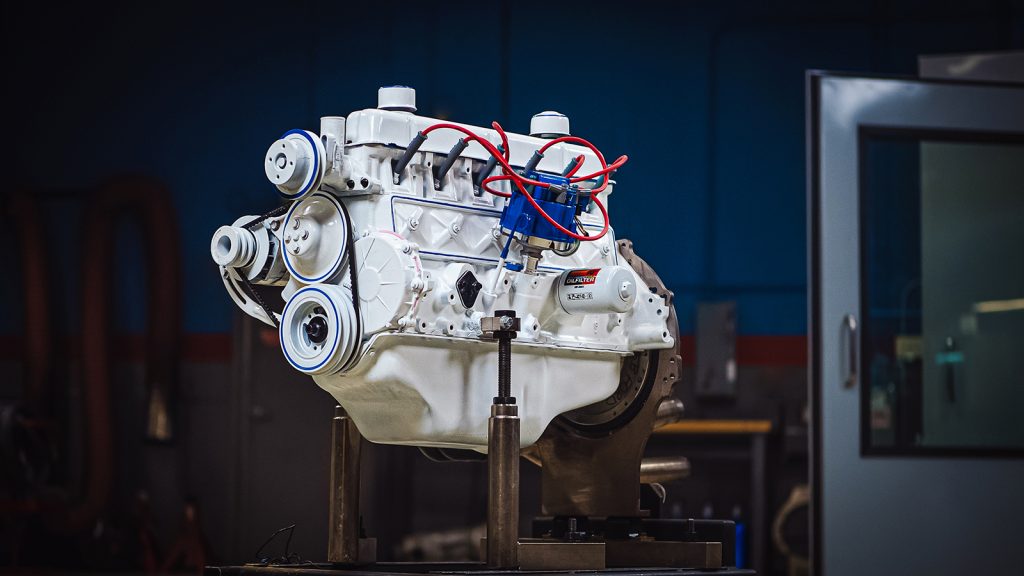
With basic oil changes and sometimes even with neglected maintenance these engines routinely exceeded 300,000 miles without internal repairs, with countless examples surpassing 500,000 miles in commercial service.
Perhaps most telling about the 300’s durability was its widespread adoption in industrial and stationary applications. The same basic engine block served as the foundation for everything from irrigation pumps and generators to forklifts and welding machines, where continuous operation and minimal downtime were essential requirements. In these demanding environments, properly maintained 300s frequently delivered decades of service with only minor repairs.
The engine’s legendary toughness became such a core part of Ford’s brand identity that it influenced consumer perception of the entire F-Series pickup line. For many contractors and fleet operators, the presence of the 300 inline-six was a primary reason for choosing Ford trucks, knowing they were getting a powertrain that would likely outlast the vehicle body, transmission, and other major components.
Even today, decades after production ended, these engines maintain remarkable value in the used market specifically because of their reputation for longevity. In an era of increasingly complex electronic engine management and emissions systems, the 300’s mechanical simplicity and accessible design make it a preferred choice for applications where reliability trumps efficiency or specific output.
For generations of Ford truck owners, the distinctive, slightly uneven idle of the 300 inline-six wasn’t just a sound it was reassurance that their vehicle would start and run virtually forever with minimal intervention.
9. Toyota 1JZ/2JZ Inline-Six Engines
The Toyota JZ-series engines, particularly the 2.5-liter 1JZ and the legendary 3.0-liter 2JZ, represent perhaps the most overengineered production engines ever released to the consumer market.
Produced from 1990 to 2007 and most famously powering the Toyota Supra, Lexus IS300, and various Japanese-market models, these inline-six powerplants combined exceptional strength with sophisticated technology to create what many enthusiasts consider the ultimate expression of internal combustion durability.
What made the JZ engines truly exceptional was Toyota’s seemingly cost-no-object approach to fundamental strength. The iron block featured extraordinarily thick cylinder walls, a seven main bearing crankshaft design with large bearing surfaces, and robust connecting rods that could handle far more power than stock output levels.
The aluminum dual overhead camshaft cylinder head utilized six-bolt-per-cylinder mounting for exceptional sealing under pressure, while the timing belt was overspecified to handle the forces involved. In turbocharged variants (1JZ-GTE and 2JZ-GTE), the hardware was so overbuilt that stock internal components could reliably handle double the factory power output.
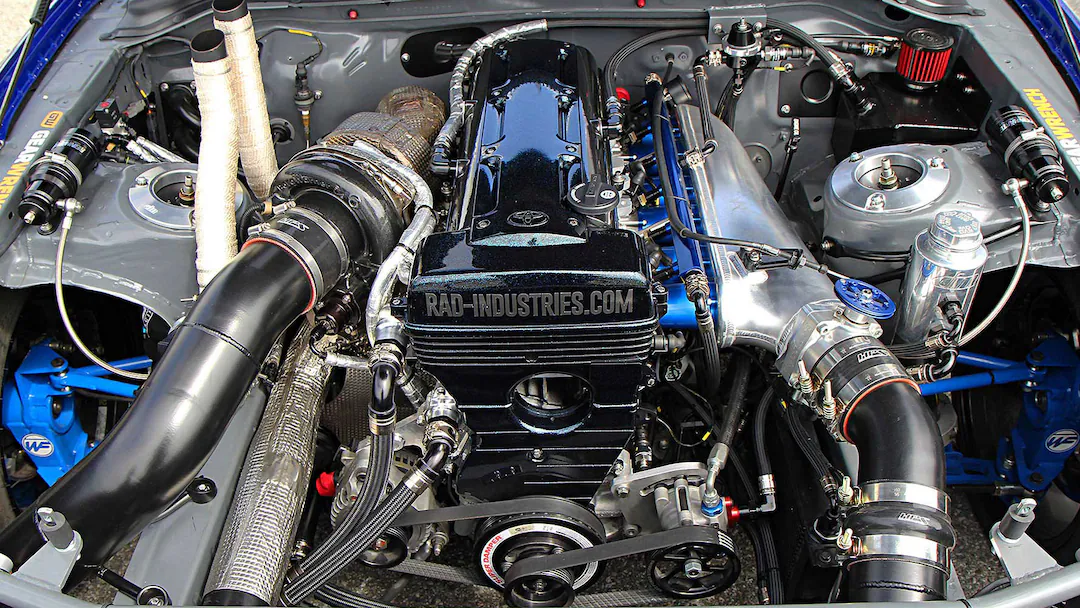
In stock form, these engines produced between 215 and 330 horsepower depending on the variant and market, figures that represented significant restraint given the mechanical capability of the platform.
This conservative tuning contributed significantly to their legendary reliability. With proper maintenance primarily quality synthetic oil changes and periodic timing belt replacement—these engines routinely exceeded 300,000 miles without requiring internal repairs.
The non-turbocharged variants became particularly renowned in Japanese taxi fleets, where examples exceeding 500,000 miles without rebuilding became commonplace.
The JZ series achieved immortality in automotive culture not just for longevity but for how they maintained performance characteristics throughout their extended lifespans. Unlike many engines that gradually lose compression and power over high mileages, properly maintained JZ engines often retained factory performance specifications even after hundreds of thousands of miles.
This consistency, combined with their massive aftermarket support, made them prized candidates for restoration projects and engine swaps when their original vehicles reached the end of their service lives.
Perhaps most impressive about the JZ series’ durability was how it managed this feat despite the complexity of its design. Unlike some long-lasting engines that achieved reliability through extreme simplicity, the JZ combined sophisticated dual overhead camshafts, sequential turbocharging (in some variants), and electronic management systems without compromising longevity.
This successful integration of performance technology with bulletproof reliability influenced engine development across the industry and established benchmarks that manufacturers still struggle to match decades later.
Today, as the vehicles they originally powered become increasingly collectible, clean examples of JZ engines particularly the 2JZ-GTE command extraordinary prices in the aftermarket, with some fetching more than entire vehicles of lesser pedigree.
For a generation of enthusiasts, the distinctive sound of a JZ-series inline-six represents not just performance potential but the pinnacle of Japanese engineering philosophy: sophisticated technology built upon a foundation of uncompromising durability.
10. International Harvester/Navistar 7.3L IDI Diesel
The International Harvester/Navistar 7.3L IDI (Indirect Injection) V8 diesel engine stands as a monument to agricultural-grade toughness in the light truck market.
Produced from 1988 to 1994 and used primarily in Ford F-Series heavy-duty pickups and medium-duty commercial vehicles, this massive naturally-aspirated diesel brought industrial durability to the consumer market long before diesel performance became fashionable in American trucks.
What distinguished the 7.3L IDI was its fundamental simplicity and overbuilt nature. The massive cast iron block and heads provided exceptional thermal stability, while the indirect injection system (where combustion was initiated in a prechamber rather than directly in the cylinder) reduced mechanical shock and operating pressures compared to direct injection designs.
The engine utilized a gear-driven camshaft rather than a timing chain or belt, eliminating a common failure point in high-mileage engines. Most importantly, every component from the forged steel crankshaft to the connecting rods and valve train was dimensioned for continuous heavy-duty operation rather than weight or cost optimization.
In stock form, the 7.3L IDI produced a modest 185 horsepower and 360 lb-ft of torque figures that seemed underwhelming compared to gasoline engines of the era but provided the low-end torque necessary for towing and hauling applications.
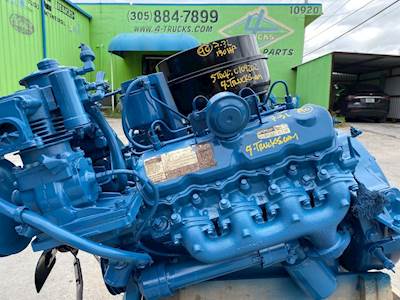
This conservative output meant the engine operated well within its mechanical limits even under sustained heavy loads. With basic maintenance primarily clean oil changes, fuel filter service, and occasional injection system maintenance these engines routinely exceeded 500,000 miles without internal repairs, with many documented examples surpassing 750,000 miles while maintaining compression and oil pressure.
Unlike many other engines on this list, the 7.3L IDI achieved its legendary status not through sophistication but through an almost deliberate lack of it.
The absence of complex electronics, minimal emissions equipment (by modern standards), and a straightforward mechanical fuel delivery system meant there were simply fewer components that could fail.
This simplicity made the engine particularly popular in rural and agricultural settings, where owners might need to perform repairs with limited resources.
The engine’s durability often far exceeded the chassis it was installed in. In heavy commercial use, it became common for these engines to outlast multiple transmissions, body components, and even frames.
When the original vehicles finally reached the end of their service lives, the engines were frequently salvaged and repurposed for stationary power generation, irrigation pumps, or transplanted into custom vehicle projects.
Though eventually superseded by the more powerful PowerStroke turbodiesel engines, the 7.3L IDI created a legacy of toughness that influenced customer perceptions of diesel reliability for decades.
For many owners working in demanding industries, these engines weren’t just powertrain components but essential business tools that delivered year after year of reliable service in environments where downtime wasn’t an option.
In the hierarchy of diesel durability, the 7.3L IDI remains a benchmark of what’s possible when an engine is designed with longevity as its primary objective.
Also Read: 10 Best Vehicles for Rural Postal Workers That Prove Their Utility

